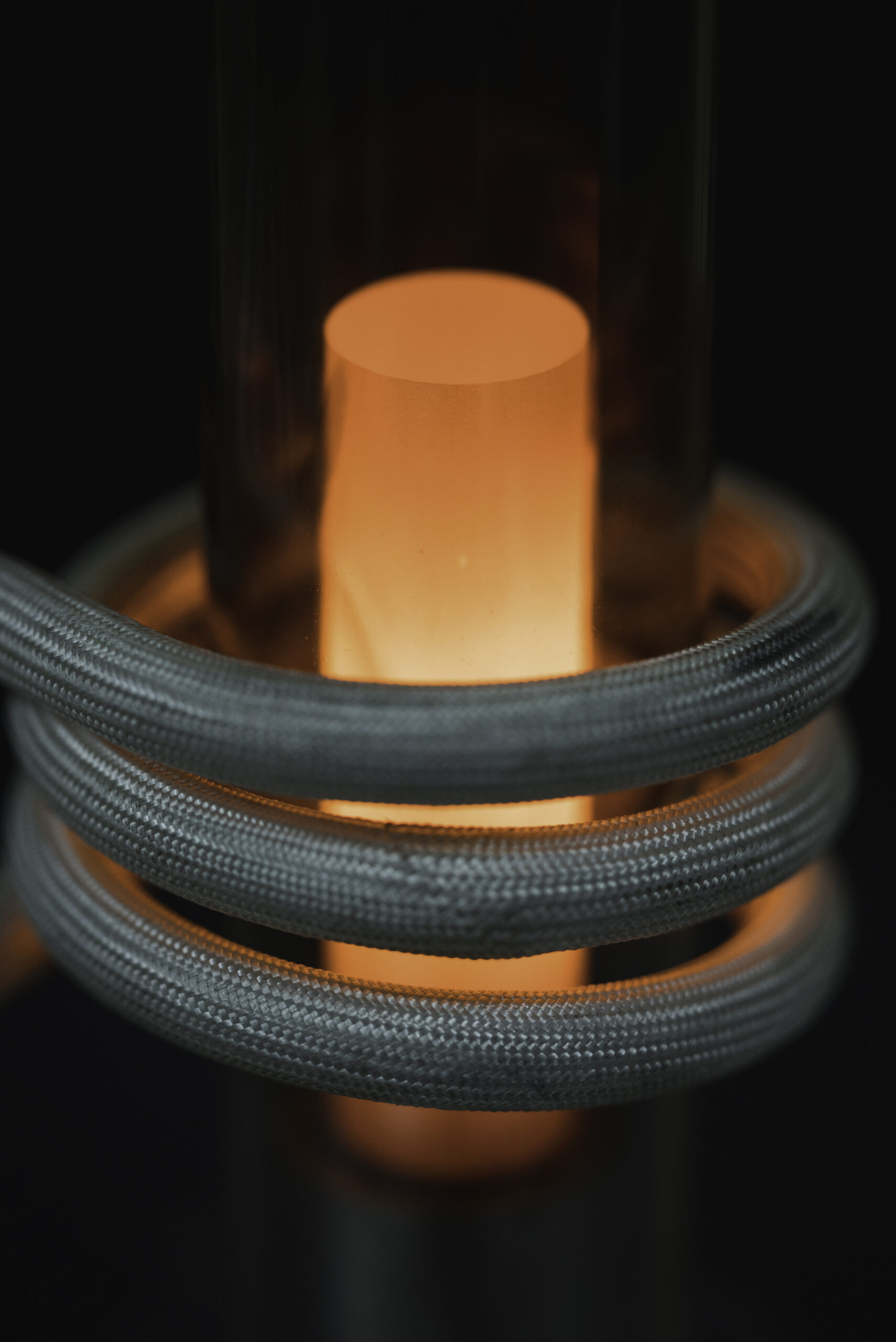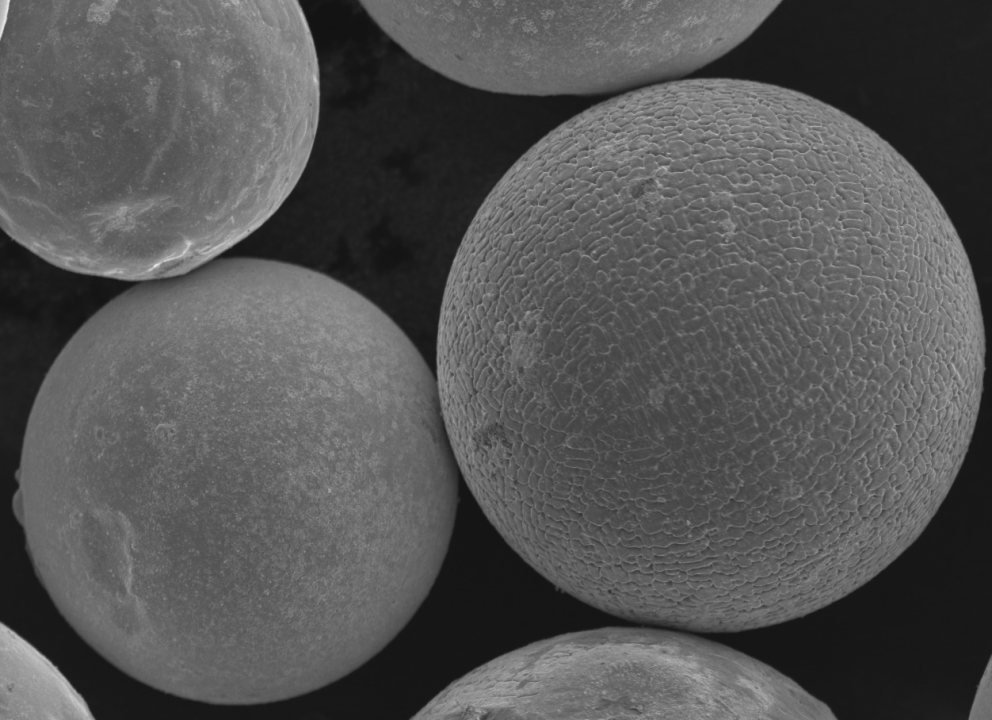In this article, you will learn:
1. What’s the principle of induction heating?
2. How Induction furnace works?
3. What are the applications of induction melting?
4. Why induction melting furnace is useful with ultrasonic atomization?
The principle of induction heating
Induction heating allows heating up or melting of an object without physical contact. The process uses high-frequency alternating currents to heat an electrically conductive material. The principle of induction heating is based on Faraday’s law of electromagnetic induction, which states that a changing magnetic field will induce an electric current in a conductive material. In induction heating, an alternating electrical current is passed through a coil, creating fluctuating magnetic fields. Its direction can change thousands of times per second. When the conductive material is introduced into this magnetic field, this coil induces a current flow in the processed material. These currents, called eddy currents, generate heat due to the resistance allowing it to melt material. The heat generated is proportional to the frequency of the electrical current and the electric resistance of the material.
A secondary source of induction heating power comes to form the hysteresis losses. They are generated when changes in magnetic field direction change the magnetic domain orientation inside materials. This secondary induction heating effect is significant for ferromagnetic materials such as Iron, Nickel, or Cobalt.
How induction furnace works?
An induction furnace is an electrical device used to heat metal or other conductive materials. An induction furnace consists of a crucible, which holds the material to be heated, and an induction coil installed around the crucible and is connected to an electrical power supply. The copper coil is energized with a high-frequency electrical current, which generates a fluctuating magnetic field around the crucible. Then, two options are possible: the crucible is made from a non-conductive material (e.g. ceramics), and the magnetic field induces an electric current in the material within the crucible, which generates heat through resistance. The second option is when the crucible is also made of a conductive material such as graphite. Then both the crucible and feedstock are heated with induction currents. The crucible material needs to be able to withstand high temperatures and prevent contamination of the heated material.
Additionally, induction furnaces offer the possibility of heating carried under various atmospheres. Depending on processed material and specific requirements, heating can be carried under vacuum, in an inert gas atmosphere (such as Argon, Nitrogen, or Helium), or an active gas atmosphere.
What are the induction melting applications?
Induction melting is a widely used process in the metal casting industry and has several applications. Some of the most common applications of induction melting include:
1. Metal casting: melting metals, such as steel, iron, and aluminum, which are then poured into molds to create castings of various shapes and sizes.
2. Heat treating: induction heating process is also used to heat treat metals, such as steel, to improve their properties and enhance their performance.
3. Recycling: crucible induction melting is a popular method for recycling scrap metal, as it allows for precise and efficient melting of various metal alloys without the risk of contamination.
4. Ingot production: induction melting equipment is used to produce ingots, which are large blocks of metal used as raw material for further processing.
5. High-temperature research: Induction melting is used in high-temperature research to study the properties of materials at elevated temperatures.
6. Processing of refractory materials: Refractory materials have high melting points and are difficult to melt using traditional methods. Induction furnaces are well-suited to the task due to their high melting rates and precise temperature control.
7. Metal powder production: crucible furnaces can be used in an array of atomization techniques, including gas atomization or ultrasonic atomization.
Induction heating achieves high efficiency. It offers several advantages over other melting methods, such as improved energy efficiency, precise temperature control, and reduced emissions. It is widely used in various industrial and research applications due to its reliability, efficiency, and ability to produce high-quality results.
Why induction melting furnace is useful with ultrasonic atomization?
One of the example devices that use an induction melting process for metal powder production is rePowder equipped with a module using induction furnace technology. The device combines induction heating with ultrasonic technology to create a high-quality, spherical metal powder. It can be used e.g. in additive manufacturing, soldering, brazing, surface coatings, and more.
In general, rePowder features two different heat sources. First is an electric arc/focused plasma cold crucible melting for alloy homogenization. Second is a direct melting at the top of the sonotrode or a crucible induction furnace.
The induction unit is used to process volatile materials with relatively low melting points, which tend to evaporate in plasma (e.g., Sn, Zn, Mg, Pb, and Al alloys). It can also be used for materials with high thermal capacities and conductivities at temperatures up to 1300 °C (e.g., precious metals like Cu, Ag, and Au alloys). In the induction-based process, materials with any shape and form can be placed into the crucible, including a final alloy, master alloy, or pure elements. Alloying is carried out under constant stirring conditions, which are maintained by a pulsing induction power generator. Melting can be performed under a vacuum or an inert gas atmosphere. Ultrasonic atomization is conducted under an inert gas atmosphere.
The induction process involves melting the material in a graphite crucible. Then molten metal is fed through a nozzle by pressure differential to a vibrating element, also known as a sonotrode. The material can be processed with different frequencies from 20kHz, producing powders with d50 at 80 µm for EBM DED or thermal spray, and 40 and 60kHz producing powders with d50 of 45 and 35 µm for lpbf and other powder technologies.




